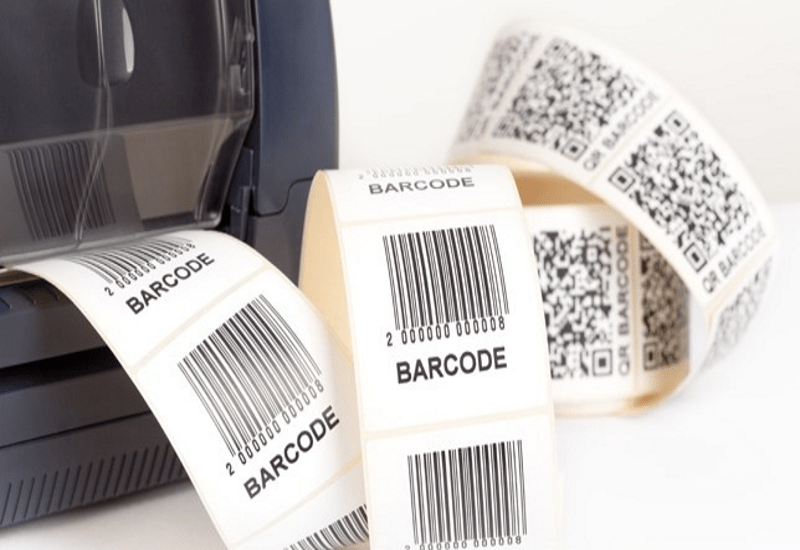Market Report
The Future of Thermal Printing to 2023

The global thermal print market reached a total value of $35.51 billion at end-user level in 2018. The market is then forecasted to expand at a rate of 5.0% compound annual growth rate (CAGR) through to 2023 – yielding total market value of $45.39 billion in that year.
The thermal print outlook contrasts well with the overall print industry forecast from Smithers, which will see annual increases in value of juts 0.8% across the same period.
The future success of thermal print will rely on new opportunities and market potential in key applications:
Together these three segments account for over $22.5 billion (at end-use prices), 63% if the market worldwide, and will account for the majority of value growth across 2018-2023
Retail
The retail industry is the largest end user of thermal printing technology, it uses specialist point-of-sale POS printers designed for delivery of transaction receipts mostly to consumers. Receipt papers are direct thermal media in the lowest, but adequate, thermal grades. The industry uses both manned check-out and increasingly automated self-check-out systems.
E-commerce trade is disrupting retail, diminishing some traditional markets such as till receipts as transactions move to an online world with electronic payment. More lately in response leading physical retailers – for example Walmart, Kohl’s, Sainsbury’s – are developing their own e-commerce systems. Customer orders are tracked using thermally printed barcode labels through the store’s own logistics, and bin tags for customer store pickup systems were introduced in 2017 as a way to compete with the like of Amazon.
Demand for card printing continues to grow as stores develop more loyalty card systems for customers and multi-retailer gift cards. In general, the dye diffusion thermal transfer (D2T2) technology for photo prints is declining as consumers opt for digital systems. Other technologies, like inkjet, are competing vigorously.
New developments in direct thermal media with greater outdoor capability will enter the space over the next few years, substituting for thermal transfer products. This creates a more flexible mobile situation as the printers are conveniently smaller than a portable desktop. More kiosks will be placed in the future, particularly in the aisles rather than check-outs to provide more customer engagement opportunities.
Transportation and logistics– airlines, distribution, mail, package and freight delivery, railroads etc – represent the fastest growing application for thermal printing. It was one of the early adopters of barcode technology for functions like airline baggage tracking and shipping packages with delivery giants UPS, DHL, TNT and FedEx.
Printer placement in delivery services is close to saturation in developed markets, but there is a major upsurge in the use of mobile printers for labelling and re-labelling, delivery notes for consumers and delivery information. The use of postal services for last-mile delivery in North America and other regions is creating some new printer placements and label usages.
For airlines, online check-in, smartphone boarding passes and print-at-home solutions is reducing the growth rates slightly but this is offset by wider use of airborne transport. Rail and mass transit systems in developing regions are increasing but this is offset partially by mature regional use of smart tickets or EMV card transactions. Ticket printer placement shows flat growth. Any new ticket printers are kiosks.
Forecast changes in this sector show: the increased use of security features in transportation ticketing to reduce fraud; a reduction in the need for near-infrared readable direct thermal for package delivery; smart labels for trucking of temperature-sensitive foods and pharmaceuticals; and increased use of QR and 2D codes for more trace data.
Manufacturing
Manufacturing is the second largest market for thermal printers and associated supplies, with combined revenues of $7.55 billion in 2018, divided between $1.7 billion in printers and $5.85 billion in supplies. It comprises use of these in factory settings for industries as diverse as beverages and aerospace, tobacco and consumer electronics.
Barcode printers represent 64.2% of the total printer demand in 2018; and these are standard installations in European, Japanese, and North American factories. Most of the growth in this segment in 2018-2023 will be in Asia-Pacific, which is becoming the global manufacturing centre, where the use of barcode applications is only partially saturated.
Manufacturing industry is moving to mobile workforces in many areas like warehousing, inventory control and parts picking. This has seen a tremendous increase in the placement of mobile printers, which can be either belt mounted on production personnel or truck mounted on pallet trucks. In all cases it is usually a complete system – printer, scanner, microcomputer or smart device, which is wirelessly linked to the host system for data exchange.
The increasing use of 2D barcode labels for traceability of critical parts in the automobile industry that require high temperature durability is also an ideal fit for thermal transfer printing.
Technologies that will grow in this segment will come from direct laser imaging, which will remove the need for a pressure-sensitive adhesive on the label, and new systems from Ricoh that can create rewritable bin tag labels for machine parts. Thermal transfer overprint market shares are also threatened by the improvements being made in high-speed inkjet.
The analysis and data above is drawn from the new Smithers market report the Future of Thermal Print to 2023. To purchase this business strategy asset or for more information visit the market report page.